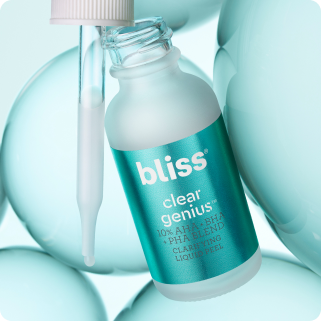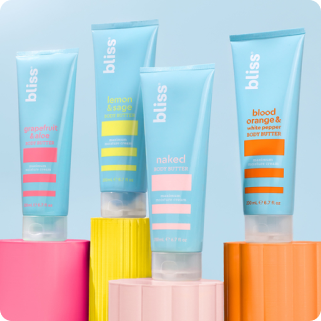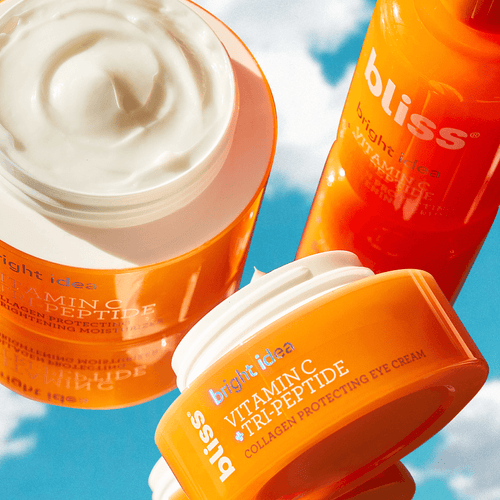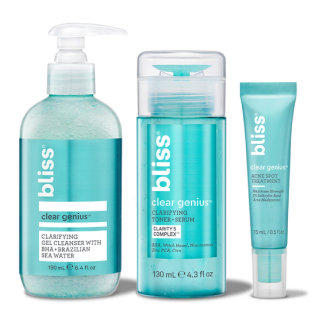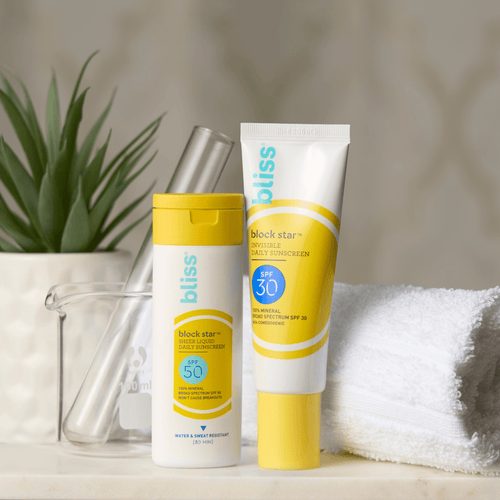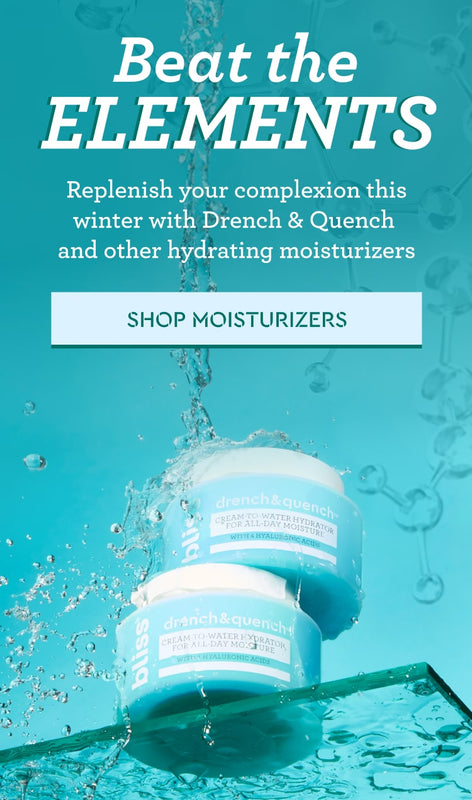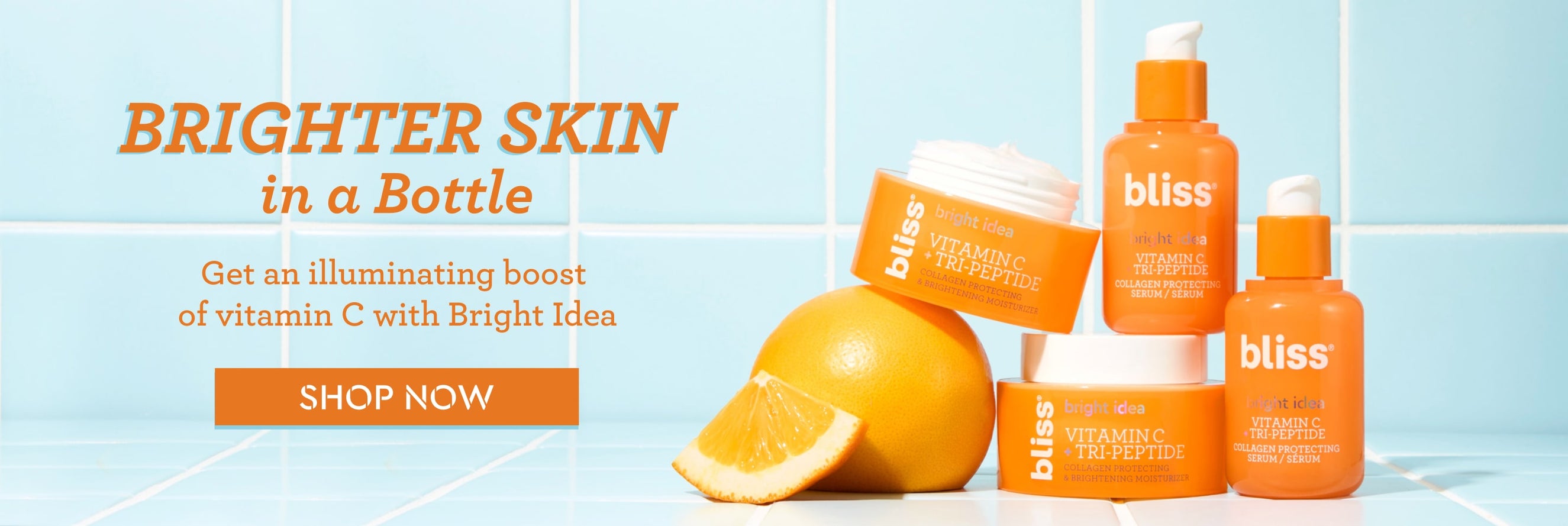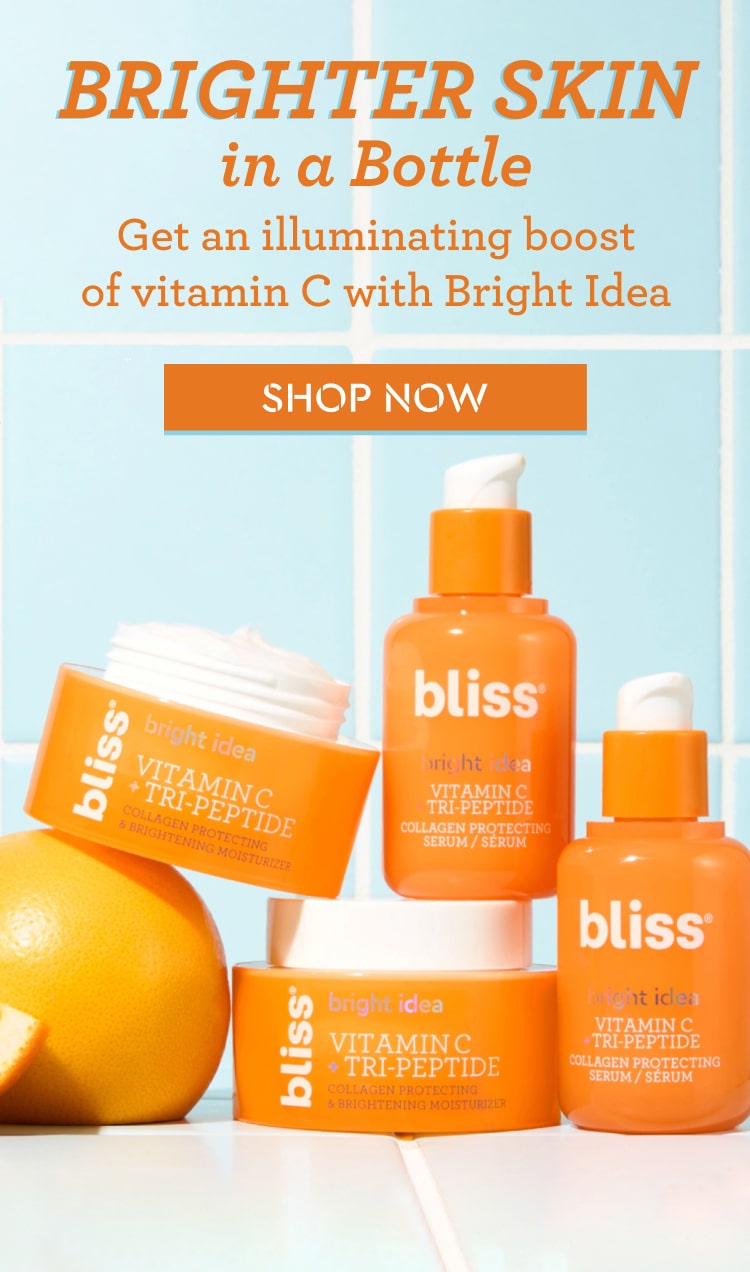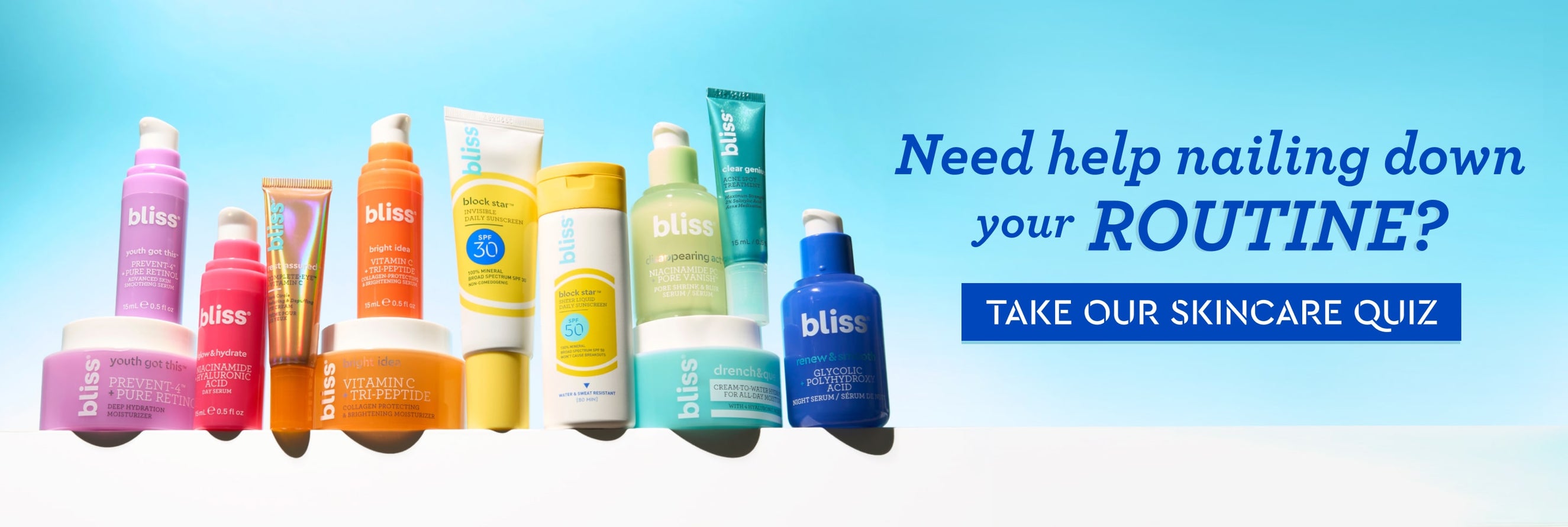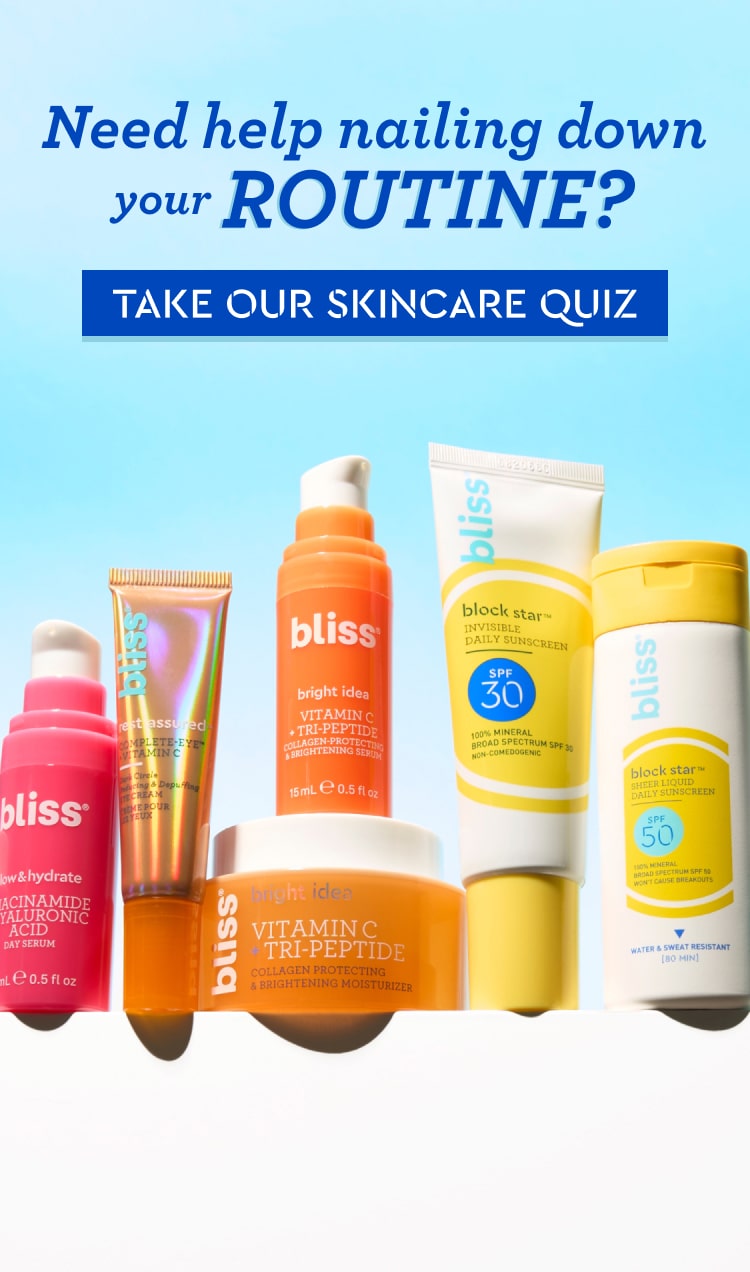Shop Our Collections

Makeup Melt
Makeup-removing necessities to kick off your cleansing

Lemon & Sage
The zesty scent that put us on the map

Clear Genius
Treat problem skin and maintain a clear, calm complexion.

Fabgirl Firm
Body Firming & Contouring Cream
SHOP OUR PRODUCTS

Makeup Melt
Oil-free Makeup Remover Wipes

Lemon & Sage Body Butter
Lemon & Sage Maximum Moisture Cream

Clear Genius Cleanser
Clarifying Gel Cleanser

Fabgirl Firm Skin Tightening Body Cream
Body Firming & Contouring Cream
NOT SURE WHAT YOU'RE LOOKING FOR?
Shop these crowd pleasers
Get Social @bliss
Your daily dose of happiness, unfiltered.
